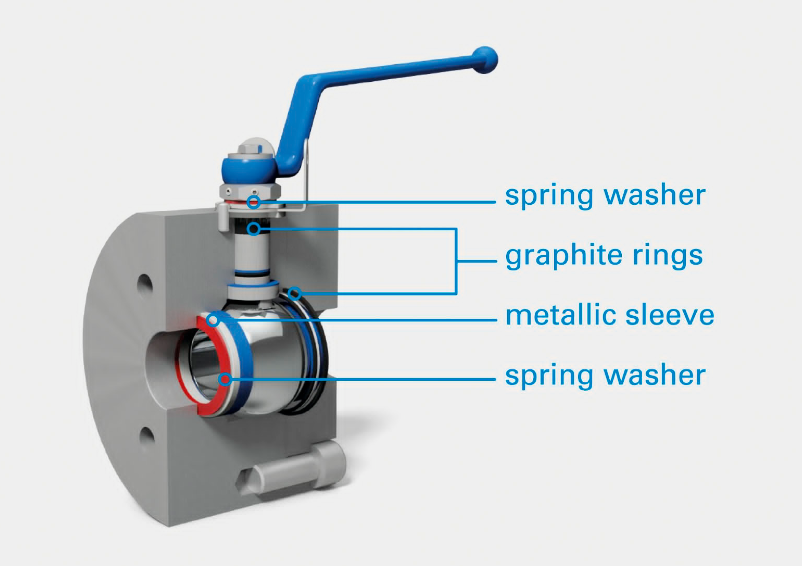
Eccentric V-type ball valves basically work as one-way valves. When you open them, the flow of water goes in one direction, and when you close them, the flow of water goes in the opposite direction. This type of valve is perfect for applications where you need to control the flow of water, like controlling water pressure in a boiler room. Plus, they’re really easy to use—just flip them open or shut!
What is an Eccentric V Type Ball Valve?
Eccentric V-type ball valves are unique because they have an eccentric cam that opens and closes the valve based on the position of the cam follower. This design helps to reduce leakage and increase flow rates. Eccentric V valves come in different types and sizes, so be sure to find the right one for your application.
Why Choose an Eccentric V Valve?
Eccentric V valves are unique because they have an eccentric cam that opens and closes the valve based on the position of the cam follower. This design helps to reduce leakage and increase flow rates. Eccentric V valves come in different types and sizes, so be sure to find the right one for your application.
How Does an Eccentric V Type Ball Valve Work?
An eccentric v-type ball valve is a type of valve that uses the forces of motion to open and close. This type of valve is used in applications where high flow rates are needed, such as water pumps and hydraulic systems. The eccentric v-type ball valve has two movable parts – the eccentric arm and the closing element. The eccentric arm has a larger diameter than the closing element, which causes it to move eccentrically when force is applied to it. This movement opens the valve and closes it when the force is released.
Benefits of an Eccentric V-Type Ball Valve
An eccentric V-type ball valve is a unique type of valve that uses the principle of Archimedes’ Principle. This principle states that a body submerged in a fluid exerts an upward force on the surrounding water, which causes the fluid to flow past the object. The eccentricity of the V shape helps to increase the overall efficiency of this type of valve.
Another benefit of using an eccentric V-type ball valve is that it can handle high pressure and flow rates. This makes these valves perfect for applications such as oil refineries and chemical plants. Furthermore, Eccentric V-type ball valves are not affected by cavitation, meaning they can handle high pressures and flows without bursting.
Overall, Eccentric V-type ball valves are a versatile option that can be used in a variety of applications. They are reliable and efficient, making them a popular choice among engineers and manufacturers.
Drawbacks of an Eccentric V-Type Ball Valve
An Eccentric V-type ball valve is a common type of valve found in oil and gas pipelines. This type of valve is used to regulate the flow of fluid through the pipeline by allowing or preventing the passage of fluid in or out depending on the position of the eccentric disk.
There are a few key drawbacks to using an Eccentric V-type ball valve. First, this type of valve can be difficult to operate, especially if it’s not properly maintained. Second, Eccentric V valves can become damaged over time, which can result in decreased flow capacity and even failure. Finally, Eccentric V valves are susceptible to leakage and require regular maintenance to keep them functioning properly.
All of these factors make Eccentric V-type ball valves a less desirable option than more standard types of valves. If you’re considering using an Eccentric V-type ball valve in your pipeline, it’s important to consider these potential drawbacks and choose the best option for your specific needs.
Advantages & Disadvantages of an Eccentric V-Type Ball Valve
An eccentric v-type ball valve is a commonly used valve for controlling fluid flow. It is also known as a controllable ball valve, micro-jetted ball valve, or disc-type ball valve. Eccentricity is the degree of departure from a perfect circle in the shape of the male or female part of the valve.
The more eccentric the shape, the less likely it is to close completely due to contact pressure between the two components. This property allows an eccentric v-type ball valve to open and close more slowly than other types of valves, which can result in improved flow control.
Eccentricity also affects how quickly a ball moves through the valve body; higher eccentricity valves move balls more slowly, resulting in greater adjustability and slower response time. Lower eccentricity valves move balls faster, making them better suited for high-volume applications with quick response times.
Advantages of an eccentric v-type ball valve include:
• Slower closing time results in improved flow control
• Can be made more adjustable for high-volume applications
• Faster moving balls provide better response time
Conclusion
Eccentric v-type ball valves are a common type of valve used in water and gas systems. Here is an overview of what it is, how it works, and some potential applications. Thanks for reading!


